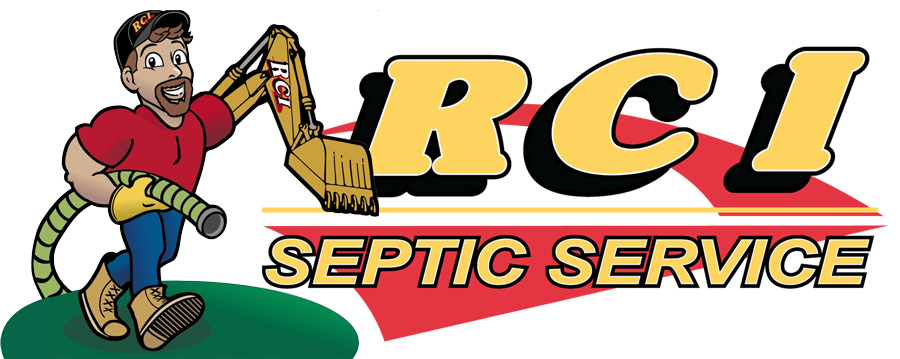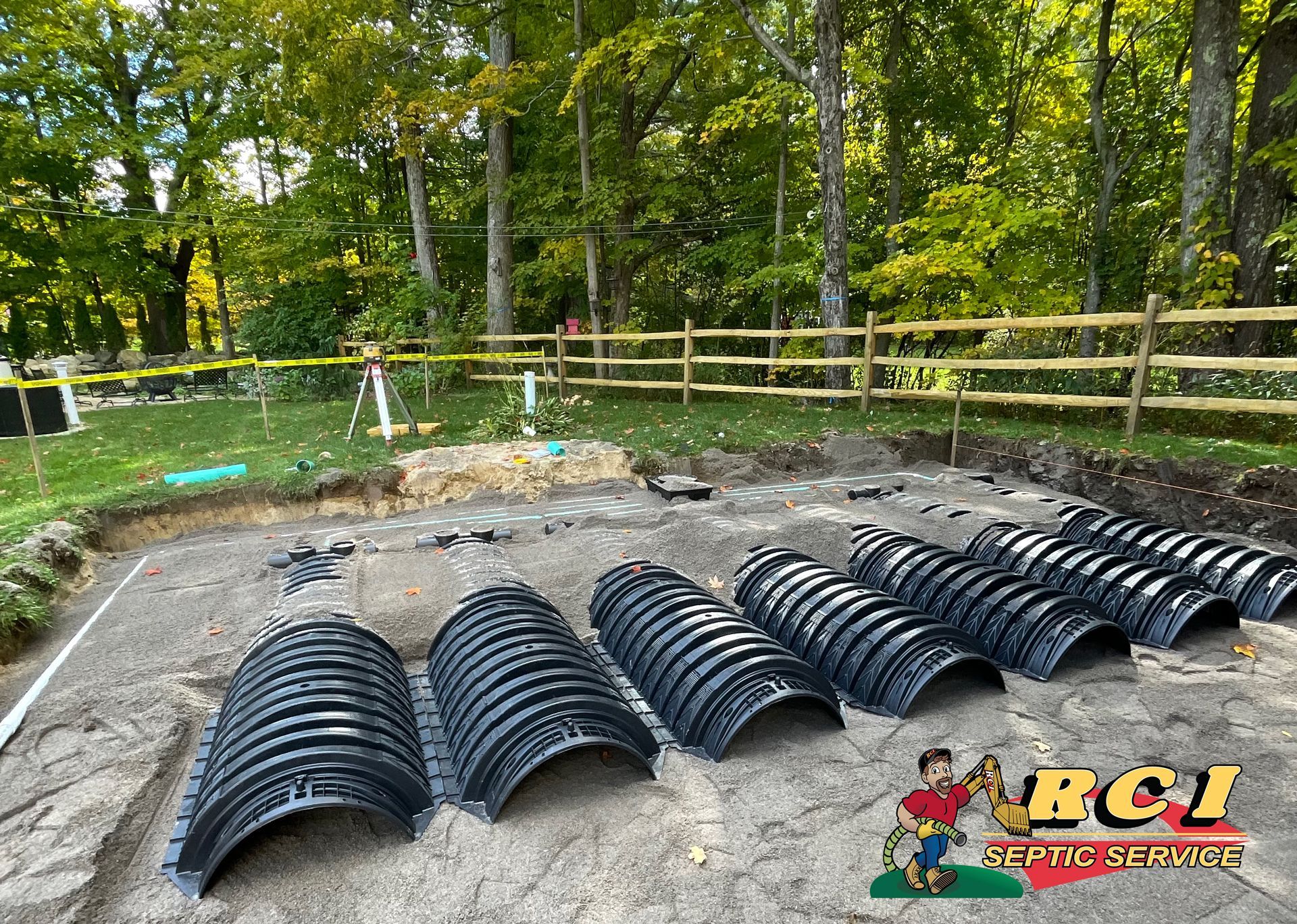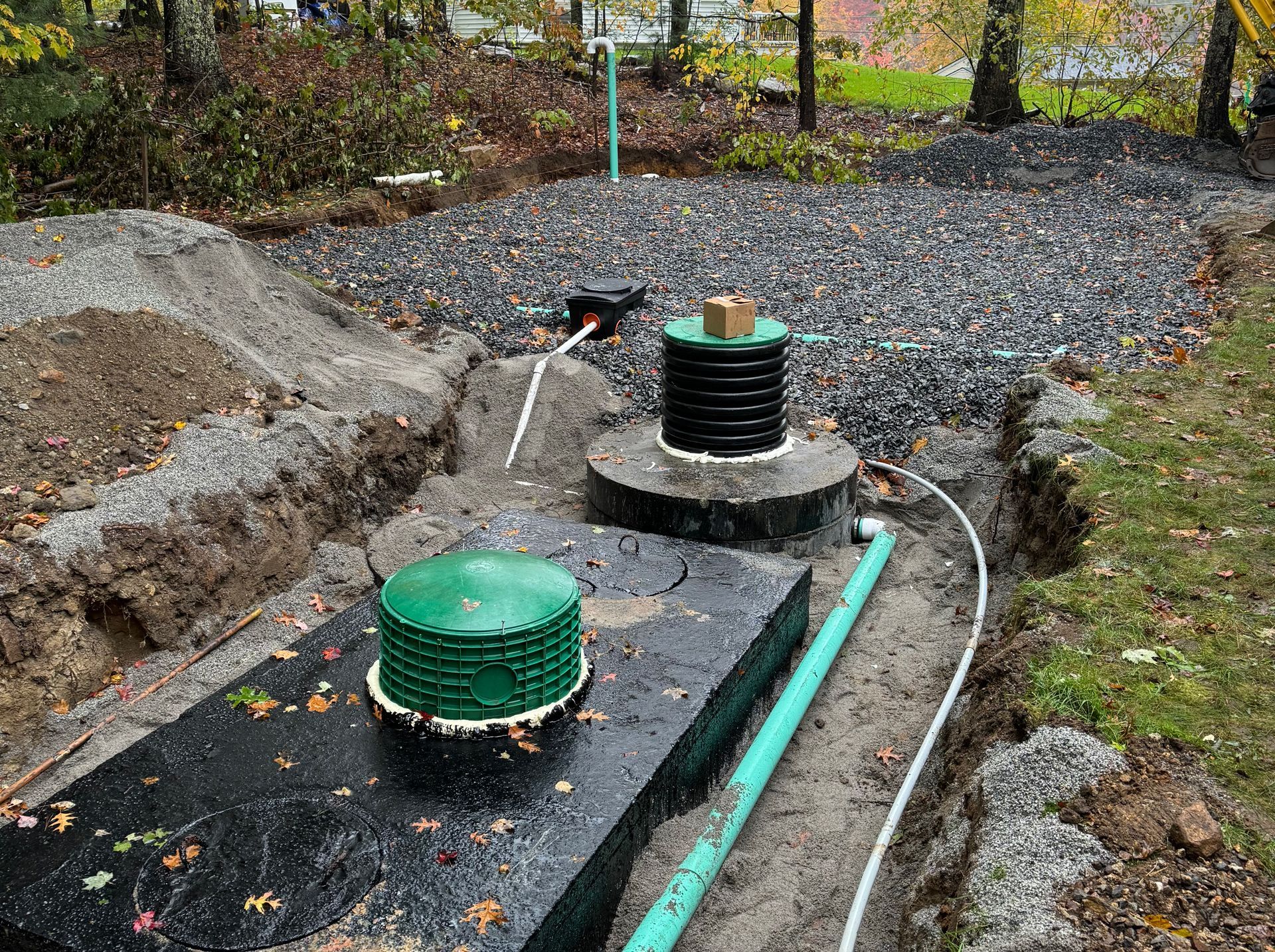Uncovering the Clues: Do I Have a Septic Tank on My Property?
Wondering ‘do I have a septic tank’? You’re not alone, and identifying this is simpler than you might think. This guide offers the key indicators to look for in determining if your home is equipped with its own waste processing system. We’ll skip the complexities and get straight to the evidence you can seek out today.
Key Takeaways
- Identifying if you’re on a septic system or connected to public sewer can often be revealed by checking your utility bills, property layouts, and observing landscape conditions.
- Locating your septic tank involves looking for the lid, following the pipes from your basement, and possibly consulting county records if necessary.
- RCI Septic Service offers extensive expertise in maintenance and repair, encouraging regular pumping and safe usage habits to keep your system functioning well.
Decoding Your Home's Waste Disposal System
Envision your home as a self-sustaining entity where each wastewater droplet is safely processed. But where does this processing take place? You must determine if it’s an unobtrusive septic system underground, or if your house is linked to a communal public sewer.
In the countryside, where the air is fresher and the homes are spread further apart, septic systems are the unsung heroes handling our wastewater. Meanwhile, those living in the hustle and bustle of cities typically rely on the intricate networks of public sewer systems. It’s a tale of two systems: septic tanks, which harbor bacteria that diligently break down solid waste, and the public sewer system, which whisks away our unwanted water to be treated elsewhere. For those in rural areas, the need to install septic systems is essential for proper waste management.
One system’s autonomy offers rural homeowners independence; the other’s interconnectedness provides urban dwellers with convenience and a monthly utility bill. Understanding which system your abode employs is the first step to becoming the master of your domain, whether you’re maintaining what’s yours or passing vital information to the next homeowner.

Check Your Monthly Utility Bill
While it may appear to be just another task on your to-do list, your monthly water bill could provide valuable insights into your wastewater system. If you spot a ‘sewer amount charged’ line item, you can bet your bottom dollar that you’re hooked up to the municipal water works. However, if that line is conspicuously missing, you might just be part of the septic tank club.
For those who draw water from the well in their yard, the absence of a water meter is another giveaway that you’re likely living the septic system life. And while a septic system frees you from monthly sewer fees, it does enlist you in the noble duty of regular maintenance to avoid those dreaded costly repairs.
Examine Property Layouts and Building Permits
If the utility bill didn’t reveal everything, you should delve into your property records like an archaeologist. These ancient scrolls – also known as building permits and blueprints – can reveal the remnants of your home’s waste disposal history. Like decoding hieroglyphs, examining these documents can show you whether your wastewater is treated in-house by a septic tank or sent off to the municipal sewer line for processing.
Don’t have these records on hand? The local board of health might just be your saving grace, as they often keep copies of septic system plans filed away for just such inquiries. Whether you’re in a new house or one with more stories than a library, these records are the key to unveiling the secrets of your home’s septic system.
Observe Landscape and Soil Conditions
On occasion, the hints you need are directly beneath your feet. Take a stroll around your property and keep your eyes peeled for lush, unusually green patches of grass. These could be the telltale signs of a septic system’s leak, silently calling out for your attention.
Additionally, if your lawn is more bumpy than a rollercoaster ride, with mounds or small hills ornamenting the yard, you might just have located the leach field of a septic system playing hide and seek.
While these landscape features could add some unexpected character to your garden, they’re also subtle indicators that you might be treading on a septic system. So, before you plan that next big backyard barbecue, it might be wise to confirm what’s below – because no one wants the surprise of a septic system making an unexpected appearance!

The Footprint of a Septic System: Locating Your Tank
Once you’ve determined the likelihood of a septic tank on your property, you can start your investigation to locate your septic tank. Septic tanks are usually the shy types, preferring to stay out of sight beneath the soil. But with the right approach, you can coax them out of hiding and find your septic. And don’t forget to tap into the collective wisdom of your neighborhood – chances are, your neighbors’ septic tanks could provide clues to your own.
With a metal soil probe in hand, you’ll transform into an intrepid explorer, probing the earth every couple of feet to outline the hidden boundaries of your septic tank. And if the lid proves to be a master of disguise, a shallow excavation might just reveal the secret you seek. Remember, this is more than a game of hide-and-seek; it’s about safeguarding your property and ensuring that your septic system remains a reliable ally.
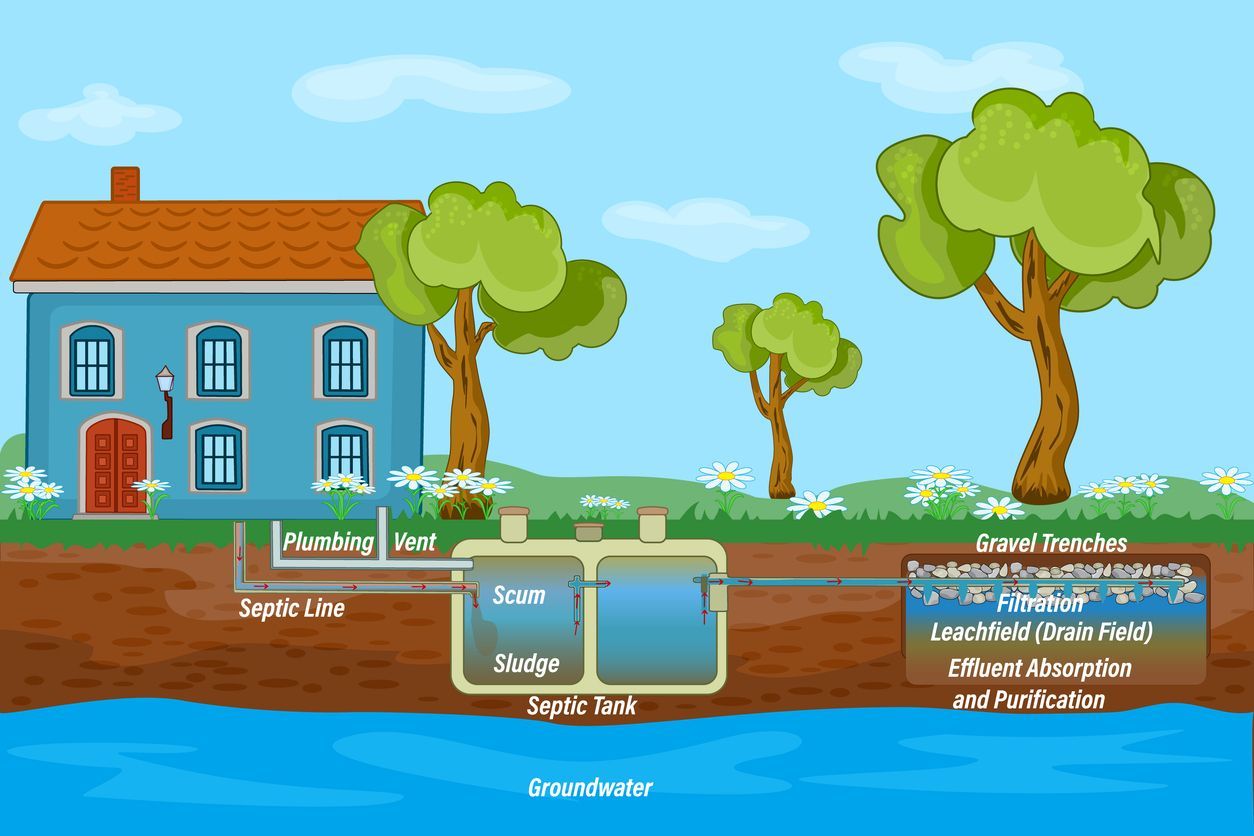
Seek Out the Septic Lid
Discovering the septic tank lid, your access point to the waste management underworld, can be a challenging adventure. If you’re lucky, lid risers may have been installed by the previous owner, making the lid as visible as a beacon above the grass. If not, it’s time to whip out your trusty metal detector and go treasure hunting. The reinforcement bars within the tank lid will sing out their location to your electronic companion.
But beware, if your septic tank is of the older variety, the lid may be a heavy slab of concrete that demands respect and care when handling. It’s not just about avoiding injury; it’s about preserving the integrity of this crucial component of your septic system. This is true for most septic tanks, regardless of their age or design, and it highlights the importance of proper maintenance for all septic tank components.
Follow the Pipes
The basement, where the sewer pipe enters your house, is the next source of information in your investigation. This pipe, a crucial artery in your home’s plumbing, is the bread crumb trail you’ll follow to the heart of your septic system. By keeping pace with the pipe as it exits your home, you’ll find yourself stepping closer to the septic tank’s location.
Typically, the septic tank will be lounging about 10 to 15 feet from your house, just beyond where the sewer pipe bids adieu to the comfort of your home’s interior. To pinpoint this exit point, grab a tape measure and get to work. Your sleuthing will lead you to the precise spot where the drain pipe escapes into the great outdoors, and from there, the tank is but a few feet away.
Utilize County Records
If all other methods prove fruitless, you can turn to the county health department for assistance. These keepers of records hold the keys to detailed maps and documents that can lead you to your septic treasure. By requesting a septic tank map or property survey maps from your local city government, you’re effectively pulling back the curtain to reveal the hidden secrets of your property.
Most counties are more than willing to assist homeowners in their quest for understanding, so don’t hesitate to ask for any records that could shine a light on the presence and placement of your septic system. With this information in hand, the whereabouts of your septic system will no longer be a mystery, but a well-documented fact.
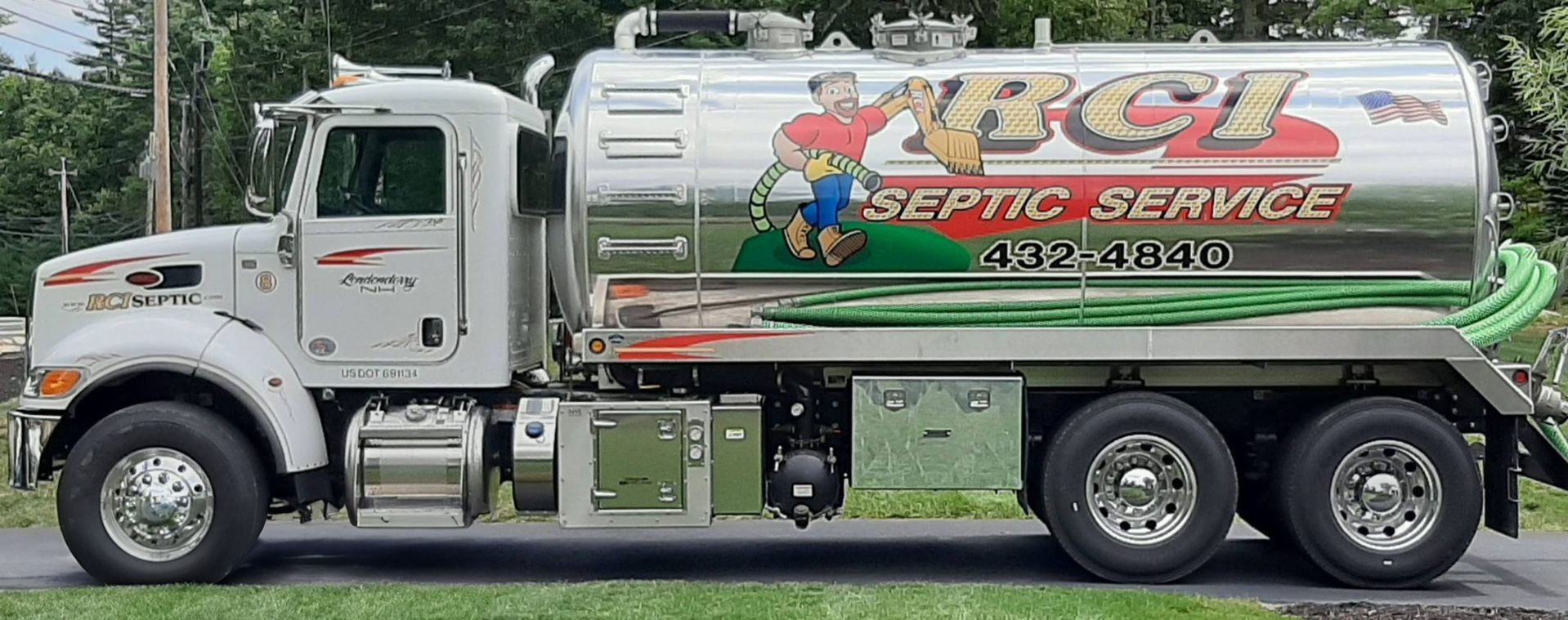
RCI Septic Service: Your Local Septic Expert
You may believe you’ve found enough evidence to decipher the mystery independently. However, when complications arise and you need a genuine septic expert, RCI Septic Service is your go-to local authority with more than 25 years of experience in the field. With a family heritage steeped in specialized excavation and septic techniques, they’re the seasoned professionals you want on your side.
Whether it’s routine maintenance or a full-scale installation, RCI Septic Service is renowned for its efficiency and reliability. They’re not just a service provider; they’re the trusted confidant for all your septic system needs, earning them the title of the preferred local expert in Southern New Hampshire.
Why Choose RCI Septic Service?
Choosing RCI Septic Service means selecting a partner with:
- A wealth of knowledge
- An unwavering commitment to your satisfaction
- A quarter-century of experience
- Professional, stress-free septic system maintenance
- A deep understanding of the ever-evolving state septic regulations
Rest easy knowing that RCI Septic Service will not only maintain your system but also keep it in compliance with the latest standards.
Comprehensive care is the cornerstone of RCI’s customer service philosophy. From routine check-ups to emergency interventions, their team provides a full spectrum of septic services designed to keep your system functioning at its best. When you choose RCI, you’re choosing peace of mind and a septic system that’s cared for by the very best in the business.
Services Offered by RCI Septic Service
When it comes to the services offered by RCI Septic Service, think of them as the Swiss Army knife of septic care. They handle everything from the ground up, offering:
- Cutting-edge septic system installations that use eco-friendly materials and practices that suit the unique needs of each property
- Tank pumping
- Repairs
- Replacements
- A host of other crucial upkeep services
Operating throughout Southern New Hampshire and its environs, RCI provides comprehensive septic services to ensure the proper functioning of your system.
Their expertise isn’t limited to once-off interventions; RCI encourages homeowners to engage in regular septic check-ups, with professional inspections recommended every three years, or annually for systems with mechanical components. It’s this level of meticulous care that sets RCI apart and ensures your septic system remains a reliable part of your home’s infrastructure.
Maintenance Tips for Your Septic System
Now that you’ve determined the location of your septic tank, the next step is to ensure its optimum performance. Regular inspections and pumping are the bread and butter of septic system upkeep, but there’s much more to it than that. By adopting efficient water usage, being mindful of waste disposal, and managing the drain field with care, you can extend the life of your septic system and avoid unexpected malfunctions.
It’s like having a pet; your septic system needs attention and care to thrive. By using high-efficiency toilets and appliances that reduce the volume of water entering the system, you can prevent overloading and ensure that your septic continues to process waste effectively. And when it comes to what goes down the drains, remember, your septic system is not a trash can. Non-flushable items and harsh chemicals can wreak havoc, leading to clogs and backups that nobody wants to deal with.
Regular Pumping Schedule
Regular pumping is essential to maintaining your septic system’s smooth operation. Think of it like an oil change for your car – necessary maintenance to keep things running smoothly. The frequency of this septic ‘tune-up’ varies based on:
- Your household size
- The amount of wastewater generated
- The volume of solids
- The size of your tank
For some, annual pumping may be the norm, while others can stretch it out every few years. It’s a delicate balance, and getting it right is key to avoiding the pitfalls of a full septic tank. Regular maintenance is the ounce of prevention that’s worth a pound of cure, ensuring that your maintained septic system doesn’t become a ticking time bomb under your lawn.
Safe Usage Habits
Adopting safe usage habits, which is easier than it sounds, can significantly benefit your septic system. Start by conserving water wherever possible – fix those leaky faucets, spread out laundry days, and embrace water-saving fixtures. Every drop saved is a drop that your septic system won’t have to process.
Remember, the only things that should be flushed are human waste and toilet paper – anything else is an unwelcome guest in your septic tank. And when it comes to your drains, think before you pour. Cooking grease, wipes, and chemicals are the archenemies of a healthy septic system, capable of causing clogs and disruptions that could bring your household to a standstill.

When to Call the Professionals
Even the most resourceful homeowners sometimes need to admit defeat and call in professional septic services. If you find yourself pondering the mysteries of your septic tank’s location or staring at a system that refuses to be pumped clean, it’s time to reach out for expert assistance. And let’s not forget safety – opening a septic tank lid can be dangerous, which is why it’s a task best left to the pros.
When your home starts to make strange noises – hissing pipes, slow draining fixtures, or if you’re combating odors that no air freshener can mask – consider it a cry for help from your septic system. These warning signs are not to be ignored, as they indicate underlying issues that require immediate attention. Flushing difficulties, water backups, and persistent foul odors are the bat-signal in the sky, alerting you that it’s time to call the professionals.
Summary
As we wrap up our investigative journey, let’s revisit the key clues that have led us to our septic system enlightenment. From scrutinizing utility bills and property records to observing the lay of the land and following the trail of pipes, you’ve learned how to uncover whether a septic tank calls your property home. And when the trail went cold, you discovered how county records and the trusted expertise of RCI Septic Service can guide you to the answers you seek.
Maintaining your septic system is a responsibility that comes with its rewards – a smoothly functioning home and the peace of mind that comes with it. Remember, regular pumping, water conservation, and safe usage habits are the pillars of septic system health. And when the situation is out of your hands, it’s comforting to know that professional help is just a call away. So here’s to your home’s hidden hero, the septic system – may it continue to serve you well, out of sight and out of trouble.
Frequently Asked Questions
How often should I have my septic tank pumped?
We recommend yearly for households of 5 or more, every 2 years for 3-4, and every 3 years for households of 1-2 people. Regular pumping helps prevent issues and maintain the system's effectiveness.
What are the signs that I need to call a professional for my septic system?
If you're experiencing trouble flushing toilets, slow draining fixtures, water backups, foul odors near the septic system, or strange noises from your pipes, it's time to call a professional to have your septic system checked.
Can I open my septic tank lid myself?
It's not safe to open your septic tank lid yourself due to risks like falling into the tank. It's best to contact a professional septic service for this task.
Is there anything I shouldn't flush or pour down my drains if I have a septic system?
Don't flush anything other than human waste and toilet paper if you have a septic system. Avoid dumping non-biodegradable items, cooking grease, wipes, pharmaceuticals, and household chemicals to prevent clogs and damage to your system.
How can I locate my septic tank if there are no visible signs on my property?
You can locate your septic tank by following the sewer pipes from your basement, using a metal probe to search for the tank's edges, or using a metal detector to find the septic lid. Additionally, you can check county records for maps and details of the septic tank's location.
